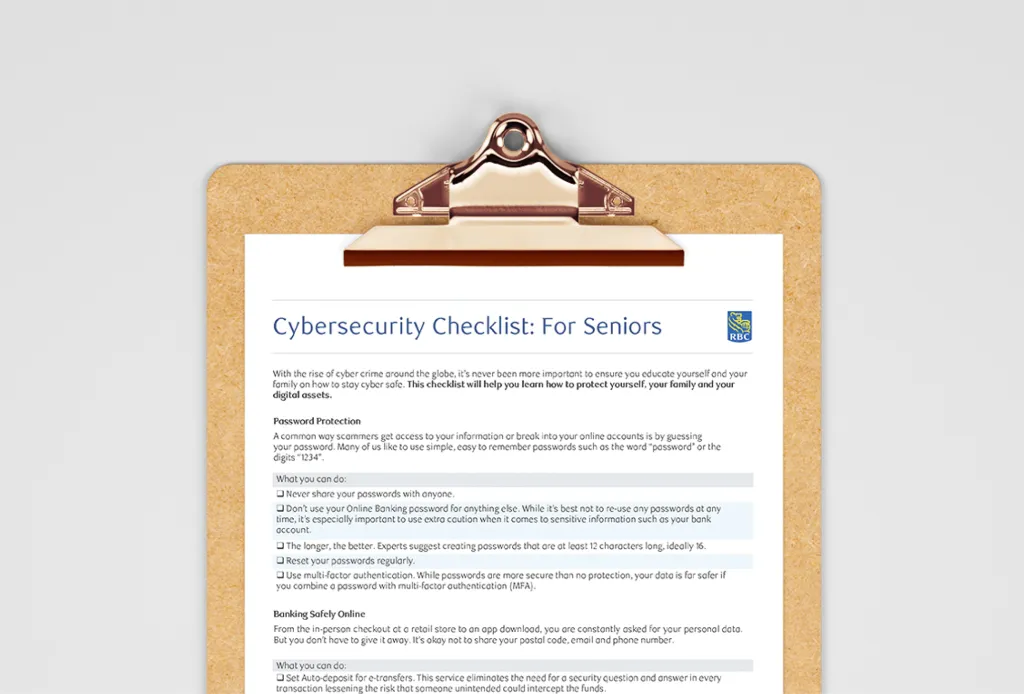Published February 8, 2024 • 6 Min Read
Text and email scams are on the rise. Fraudsters are consistently finding new ways to dupe consumers, taking advantage of new shopping, giving and travel trends to trick people out of money and information.
Here are four common scams and how to protect yourself in the year ahead:
1. Fake Charities
It’s one of the most loathsome scams around today. Fraudsters will set up charities to steal money and information, often latching on to things happening in the news — such as natural disasters or political conflicts. Sending messages that tug at the heartstrings, scammers have great success in swindling kind-hearted people.
If you’re giving to a new charity – perhaps in response to an event or crisis – it’s important to take precautions to ensure you’re giving to a legitimate organization. Here’s what to do if you receive a text or email requesting a donation:
-
Don’t click any links within the message. Instead, if you’re interested in giving, go directly to a charity’s website.
-
Conduct your own online research. If you haven’t heard of the charity before, type in the charity name and “scam” or “complaints.” This can help you determine if it’s legitimate.
-
Avoid non-traditional payment methods. If a charity asks for payment through gift cards or cryptocurrency, that’s a red flag.
-
Don’t give out more information than is reasonable. A charity does not need to know your Social Insurance or Social Security Number for tax purposes. If they request this detail, it’s likely a scam.
-
Take note of any high-pressure tactics. Legitimate organizations will not use threatening language in their attempts to encourage a donation.
2. Emails that appear to be from companies you trust
Scammers have become skilled at copying the design and language used by popular brands. A common scam involves receiving an email or text that appears to be from a company such as Amazon, Apple or Walmart. The scammers claim your account has been hacked, you’re owed a refund, or that you’re eligible for a special offer or prize. The message will go on to inform you that by clicking the link and entering your information, you’ll be able to claim your prize or reset your account.
Here’s how to protect yourself:
-
Never click links to reset your login credentials
-
Never provide sensitive information (such as your credit card information, name, and address) on a website reached by clicking a link
-
Visit the brand’s website directly by typing in the URL you know and trust
3. Missed delivery messages
There are over 2 billion online shoppers in the world – and while in some cases, purchases may be picked up in-store, most items will be shipped to homes across the globe. Scammers capitalize on this increase in shipping activity — and the likelihood that people will have at least one package out for delivery at a given time — to commit their delivery scams.
How does a delivery scam work? A scammer, posing as Purolator, UPS, FedEX or other reputable delivery companies, will send you an email or text notifying you that your package has been delayed and that you need to pay a fee before it can be delivered. You would then be taken to a website where you would enter your name, address, and credit card information with the promise that your package would be released and delivered to you soon. Here’s how to help protect yourself from this scam:
-
If you receive a message about a delivery, don’t give out your credit card information. Delivery companies will never ask you for payment this way.
-
Track deliveries through the delivery company’s official website using the tracking number provided. Do not click on any links in text messages or emails.
-
Check for spelling and grammar mistakes in the message you receive. Also, look closely at the sender’s name to try to spot a fake.
4. Fake fraud alerts
One of the best ways to keep track of your money is to sign up for alerts from your bank, which will notify you of suspicious activity or recent purchases. Unfortunately, scammers have caught on to this service and are mimicking fraud alerts in hopes of tricking consumers into giving away their bank account or credit card information.
A fake fraud alert scammer will send you a text message claiming to be from your bank. They create a sense of urgency by saying there was suspicious activity on your account or that a large purchase was recently made. Then they say, “If you don’t act quickly, your account will be locked.” To secure your account, you’ll be asked to click on a link. That link will take you to a fake website that looks like a bank login page — when you type in your credentials, scammers can steal them and gain access to your online bank account.
While this scam is tricky, there are ways to spot a fake fraud message and protect your money:
-
Take note of the number or code the message was sent from. Your bank will use the same code or number for their alerts — for instance, RBC uses the SMS short code 722373 to send you fraud alerts to confirm suspicious transactions. If the message is from a different number, ignore it!
-
Look for errors in grammar, punctuation, or capitalization. If something looks off, it’s likely a scam.
-
Don’t click a link contained within a fraud message.
-
If the message is coming from a bank you don’t use, that’s a sure sign it’s a fake.
Remember, if you receive a text or email that seems at all out of the ordinary, it’s best to take a minute to stop and think about where it came from and what it’s asking of you. By questioning suspicious messages, you can help protect yourself and your money this year.
Stay informed about any new or ongoing scams by checking RBC Current Scam Alerts.
This article is intended as general information only and is not to be relied upon as constituting legal, financial or other professional advice. A professional advisor should be consulted regarding your specific situation. Information presented is believed to be factual and up-to-date but we do not guarantee its accuracy and it should not be regarded as a complete analysis of the subjects discussed. All expressions of opinion reflect the judgment of the authors as of the date of publication and are subject to change. No endorsement of any third parties or their advice, opinions, information, products or services is expressly given or implied by Royal Bank of Canada or any of its affiliates.
Share This Article






